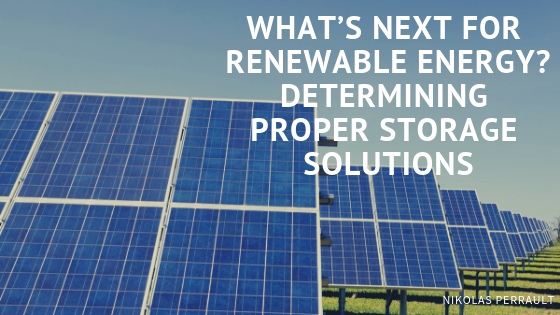More and more companies and individuals are turning to renewable energy to power their operations as opposed to costly and environmental harming fossil fuels. While the use of renewable energy is exciting and something to be heralded, it doesn’t come without its issues. Namely, storage. With solar and wind energy especially, there are days when more energy is produced than can ever be used, but other times when there is no sunshine or wind for days on end. To balance these two extremes, a proper storage solution for renewable energy is needed.
Because wind and solar energy have variable outputs, having a reliable method of storing this energy helps to ensure that the excess energy doesn’t go to waste.
The energy grid needs to have the power supply and demand equal at all times. Constant adjustments to the supply are required to account for predictable changes in demand, like daily human activity, to unpredictable changes, like storms and equipment overload. When the supply is higher than the demand, excess electricity can be used to power storage devices. When the demand is greater than the supply, the stored energy in storage facilities is discharged back to the grid.
For a 100 percent renewable energy grid, storage would need to rise from “11 gigawatts today to 277.9 gigawatts in the grid regions that include New England, New York, the Mid-Atlantic, the Midwest and parts of the South,” according to a research director for Wood Mackenzie Power & Renewables.
Most energy storage technologies are able to dispatch power to the grid quickly, compared to fossil fuels. A rapid response is necessary to ensure the stability of the grid.
There are a number of energy storage options:
- Thermal storage is used for generating energy by using power from the sun. These plants capture energy from the sun and store that energy in water, molten salts or other fluids. Thermal storage can be used for end-use energy storage. One method of this is freezing water during the night using off-peak electricity. The stored cold energy is then released from the ice to help during the day with air conditioning.
- Compressed Air Energy Storage, or CAES, is a generation storage technology that uses the elastic potential energy of compressed air in order to improve the efficiency of gas turbines. During off-peak times, these systems compress air and store that air underground in caverns. When demand peaks, the air is drawn out of storage and fired in a combustion turbine with natural gas to generate electricity.
- Hydrogen can be used for generation as a zero-carbon fuel. Hydrogen can be created with excess electricity, which is then stored in fuel cells, gas turbines or engines to be used later. Hydrogen generates electricity without the production of harmful emissions.
- Pumped hydroelectric storage provides a way for energy to be stored at the transmission stage by the grid. This is done by storing the excess generation to be used later. The majority of hydroelectric power plants have two reservoirs located at different elevations. To store energy, the plants pump water into the upper reservoir when there is more supply than demand. When there is more demand than supply, water is released downhill through turbines to the lower reservoir, which generates electricity.
- Flywheels offer a number of benefits to the grid at either the distribution or transmission level by using a spinning mass to store energy. The cylindrical device contains a large rotor inside of a vacuum. When power is drawn from the grid by the flywheel, the rotor accelerates to a high speed. This stores the energy as rotational energy. When the stored energy needs to be discharged, the rotor switches into generation mode, which slows it down, and then it runs to inertial energy, in turn moving energy onto the grid. Flywheels have long lifetimes with little maintenance needed and quick response times.
- Batteries are used to store energy on a large scale. They can be located anywhere, which makes them useful for distribution. They can also be used for end-use, such as in electric vehicles. Many types of batteries have the large-scale potential for energy storage, such as sodium-sulfur, lithium ion, lead-acid batteries and metal air. Battery technology advancements have been made mainly because of the expanding electric vehicle industry.
There are a few barriers that will likely slow the adaption of these technologies. One is the cost. Energy storage is pricey, especially when there aren’t policies in place that provide monetary value to the benefits of storage. Also, more storage capacity is not presently needed to maintain the reliability of the electric grid. Storage also lacks a strong history of large commercial-scale projects, which makes it harder to deploy new projects.
For these technologies to grow and expand, government and industry support is needed. Having proper energy storage will help in the growing usage of variable renewable energy sources and storing this clean energy.
